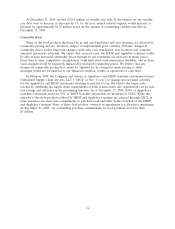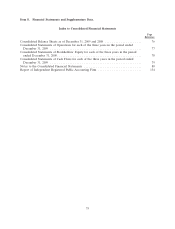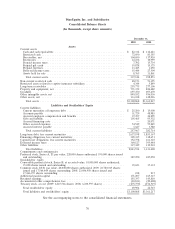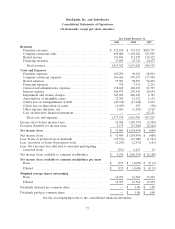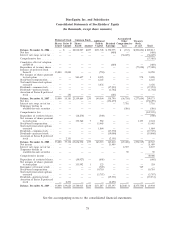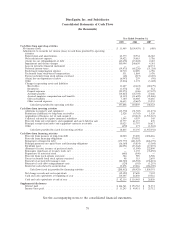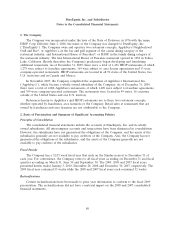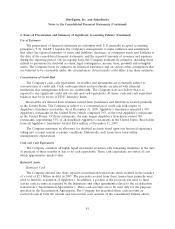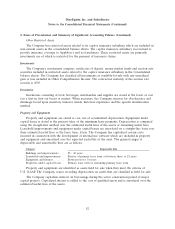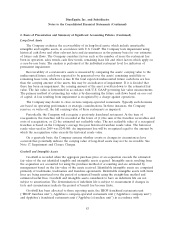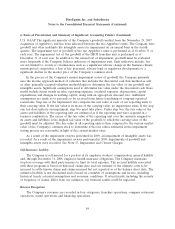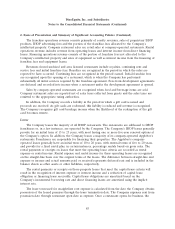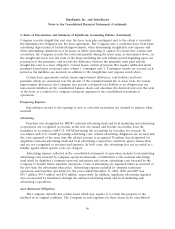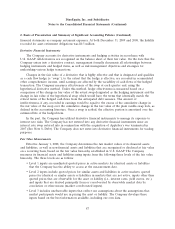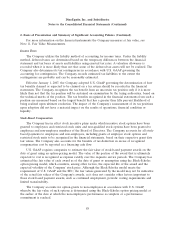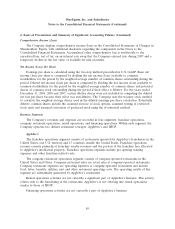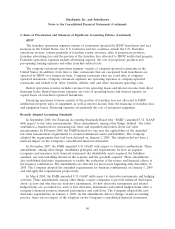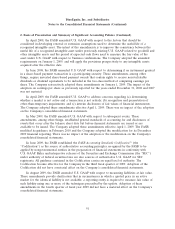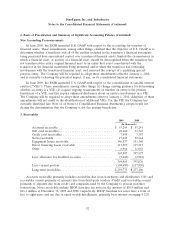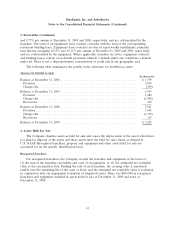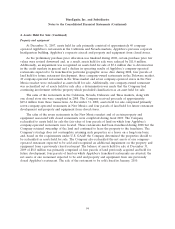IHOP 2009 Annual Report Download - page 103
Download and view the complete annual report
Please find page 103 of the 2009 IHOP annual report below. You can navigate through the pages in the report by either clicking on the pages listed below, or by using the keyword search tool below to find specific information within the annual report.DineEquity, Inc. and Subsidiaries
Notes to the Consolidated Financial Statements (Continued)
2. Basis of Presentation and Summary of Significant Accounting Policies (Continued)
U.S. GAAP. The significant majority of the Company’s goodwill resulted from the November 29, 2007
acquisition of Applebee’s and has been allocated between the two Applebee’s units. The Company tests
goodwill and other indefinite life intangible assets for impairment on an annual basis in the fourth
quarter. The impairment test of goodwill of the two Applebee’s units is performed as of October 31 of
each year. The impairment test of the goodwill of the IHOP franchise unit is performed as of
December 31 of each year. In addition to the annual test of impairment, goodwill must be evaluated
more frequently if the Company believes indicators of impairment exist. Such indicators include, but
are not limited to, events or circumstances such as a significant adverse change in the business climate,
unanticipated competition, a loss of key personnel, adverse legal or regulatory developments or a
significant decline in the market price of the Company’s common stock.
In the process of the Company’s annual impairment review of goodwill, the Company primarily
uses the income approach method of valuation that includes the discounted cash flow method as well
as other generally accepted valuation methodologies to determine the fair value of our goodwill and
intangible assets. Significant assumptions used to determine fair value under the discounted cash flows
model include future trends in sales, operating expenses, overhead expenses, depreciation, capital
expenditures and changes in working capital, along with an appropriate discount rate. Additional
assumptions are made as to proceeds to be received from future franchising of company-operated
restaurants. Step one of the impairment test compares the fair value of each of our reporting units to
their carrying value. If the fair value is in excess of the carrying value, no impairment exists. If the step
one test does indicate an impairment, step two must take place. Under step two, the fair value of the
assets and liabilities of the reporting unit are estimated as if the reporting unit were acquired in a
business combination. The excess of the fair value of the reporting unit over the amounts assigned to
its assets and liabilities is the implied fair value of the goodwill, to which the carrying value of the
goodwill must be adjusted. The fair value of all reporting units is then compared to the current market
value of the Company’s common stock to determine if the fair values estimated in the impairment
testing process are reasonable in light of the current market value.
As a result of the impairment reviews performed in 2009, an impairment of intangible assets was
recorded. As a result of the impairment reviews performed in 2008, impairments of goodwill and
intangible assets were recorded. See Note 17, Impairment and Closure Charges.
Self-Insurance Liability
The Company is self-insured for a portion of its employee workers’ compensation, general liability
and, through December 31, 2008, employee health insurance obligations. The Company maintains
stop-loss coverage with third party insurers to limit its total exposure. The accrued liability associated
with these programs is based on historical claims data and our estimate of the ultimate costs to be
incurred to settle known claims and claims incurred but not reported as of the balance sheet date. The
estimated liability is not discounted and is based on a number of assumptions and factors, including
historical trends, actuarial assumptions and economic conditions. If actual trends, including the severity
or frequency of claims, differ from our estimates, our financial results could be impacted.
Revenue Recognition
The Company’s revenues are recorded in four categories: franchise operations, company restaurant
operations, rental operations and financing operations.
84


